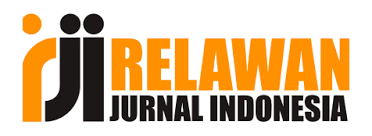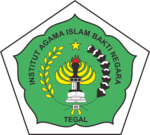Implementasi Syawir (Diskusi) dalam Meningkatkan Pemahaman Agama Santri Di Pondok Pesantren Al-Qur’an Al Amin Grendeng
DOI:
https://doi.org/10.62490/latahzan.v16i2.692Keywords:
Syawir, Understanding ReligionAbstract
Islamic boarding schools are one of the many Islamic educational institutions in which religious studies are conducted. In learning at Islamic boarding schools there are several methods that can be applied, including the syawir (discussion) method. The syawir method is a method where santri or students discuss a problem by arguing using arguments that are rational, scientific, and come from reliable sources. One of the Islamic boarding schools that researchers have encountered that implements the syawir method in its learning activities is the Al Qur'an Al Amin Grendeng Islamic Boarding School. The Al Qur'an Al Amin Grendeng Islamic boarding school is located in the Grendeng sub-district, North Purwokerto sub-district, Banyumas regency. Based on this, the researcher decided to raise the problem of how to implement the syawir method in increasing the understanding of students at the Al Qur'an Al Amin Grendeng Islamic boarding school. What was chosen for this research was a type of field research using a qualitative approach. There are two data used in this research, namely primary data and secondary data. Data obtained from interviews with administrators, students, and direct observation when activities are being carried out are primary data. As for secondary data, it is obtained through various sources such as articles, books, scientific works that are still related to research. The data collected was obtained through documentation, interviews and observation processes. Based on the research that has been carried out, the students of the Al Amin Grendeng Islamic Boarding School have enthusiasm and enthusiasm in learning to understand religious knowledge, with the syawir activities causing the students' understanding of religion at the Al Amin Grendeng Al Qur'an Islamic Boarding School to become broader and of course more easy to understand the material being studied.
References
Dr. H. Zuchri Abdussamad, S.I.K., M. S. (2021). Metode Penelitian Kualitatif (M. S. Dr. Patta Rapanna, SE. (ed.)). Syakir Media Press.
Ependi, R. (2020). Menakar Permasalahan Pendidikan Islam dalam Presfektif Islam Transitif. Hikmah, 17(1), 34–45. https://doi.org/10.53802/hikmah.v17i1.78
Fitri, R., & Ondeng, S. (2022). Pesantren Di Indonesia: Lembaga Pembentukan Karakter. Al Urwatul Wutsqa: Kajian Pendidikan Islam, 2(1), 42–54. https://journal.unismuh.ac.id/index.php/alurwatul
Mansyuri, A. H., Patrisia, B. A., Karimah, B., Sari, D. V. F., & Huda, W. N. (2023). Optimalisasi Peran Pesantren dalam Lembaga Pendidikan Islam di Era Modern. MA’ALIM: Jurnal Pendidikan Islam, 4(1), 101–112. https://doi.org/10.21154/maalim.v4i1.6376
Murdiyanto, E. (2020). Metode Penelitian Kualitatif (Sistematika Penelitian Kualitatif). In Yogyakarta Press. http://www.academia.edu/download/35360663/METODE_PENELITIAN_KUALITAIF.docx
Nurahma, G. A., & Hendriani, W. (2021). Tinjauan sistematis studi kasus dalam penelitian kualitatif. Mediapsi, 7(2), 119–129. https://doi.org/10.21776/ub.mps.2021.007.02.4
Rusandi, & Muhammad Rusli. (2021). Merancang Penelitian Kualitatif Dasar/Deskriptif dan Studi Kasus. Al-Ubudiyah: Jurnal Pendidikan Dan Studi Islam, 2(1), 48–60. https://doi.org/10.55623/au.v2i1.18
Saputra, D., Said, E., & Maipauw, N. J. (2020). Peran Pendidikan di Era Milenial. Abdimas: Papua Journal of Community Service, 2(1), 18–22. https://doi.org/10.33506/pjcs.v2i1.808
Yufarika, S. D. (2023). Tantangan Dunia Pendidikan Dan Implikasinya Terhadap Perubahan Kebijakan. Ar-Rosikhun: Jurnal Manajemen Pendidikan Islam, 2(2), 156–161. https://doi.org/10.18860/rosikhun.v2i2.21812
Downloads
Published
How to Cite
Issue
Section
License
Copyright (c) 2024 La-Tahzan: Jurnal Pendidikan Islam

This work is licensed under a Creative Commons Attribution-ShareAlike 4.0 International License.
The copyright of the received article shall be assigned to the journal as the publisher of the journal. The intended copyright includes the right to publish the article in various forms (including reprints). The journal maintains the publishing rights to the published articles.
In line with the license, authors and any users (readers and other researchers) are allowed to share and adapt the material. In addition, the material must be given appropriate credit, provided with a link to the license, and indicated if changes were made. If authors remix, transform, or build upon the material, authors must distribute their contributions under the same license as the original.
















